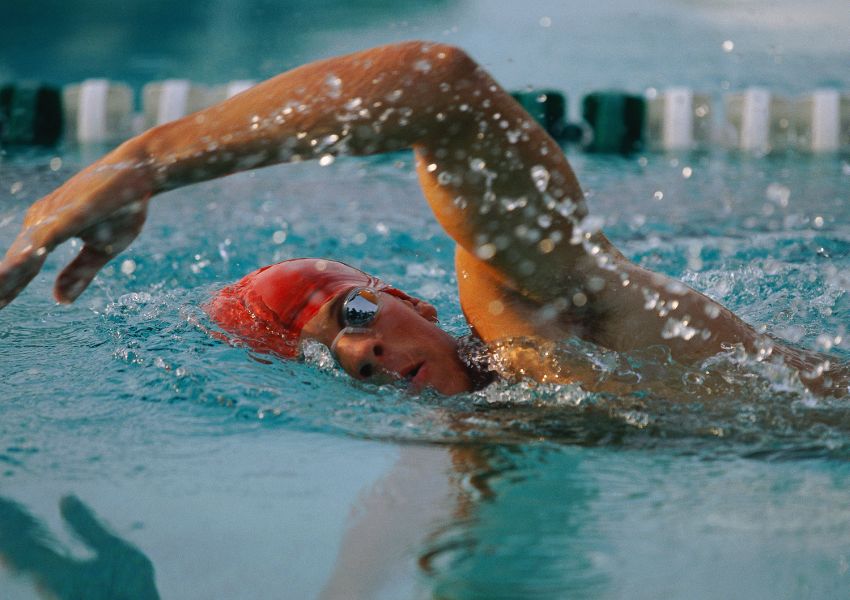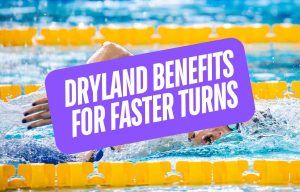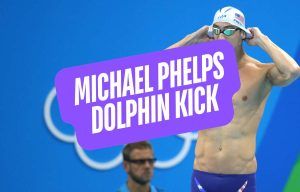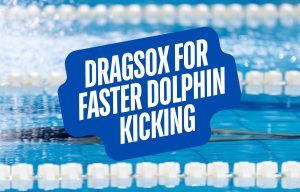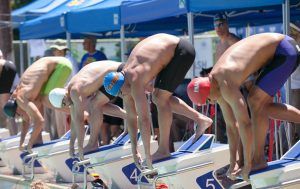Wondering whether running or swimming is the right form of cardio for you? Here is a look at the pros and cons of each so you can choose with confidence.
Swimming and running are two of the most popular forms of cardiovascular exercise.
Both are awesome for shredding fat, burning calories, and improving cardiovascular capacity. One leaves you soaked with sweat, the other with chlorine.
But which is best for you and your workout goals?
In this comparison between swimming vs. running, we will compare the two forms of calorie-busting exercise so that you can choose the one that is going to help you get to your health and fitness goals fastest.
Let’s dive right in.
Running vs. Swimming — Running
Running is one of the first forms of exercise we learn when we are kids. Running as exercise is done on a treadmill, a track, or out on the road.
Here is a deeper look at the pros and cons of hitting the trails.
Benefits of Running
Here is a look at the specific benefits of running:
Great for weight loss
It’s no surprise that running can generate a ton of weight loss. While walking can serve as a great intro to running, particularly for people just getting started on their weight loss journey, if you want to really crank up the weight loss, you need to crank up the pace.
One study1 that followed groups of runners and walkers found that the running group lost significantly more weight over the long term compared to the walking group.

Even slow running has a huge impact
The cardiovascular benefits of running have been studied extensively over the years.
Even small amounts of running, 5-10 minutes per day at slow speeds, has been shown to reduce cardiovascular mortality by 50% compared to non-runners1.
Incinerates calories
When the American Council of Exercise sat down to compared the amount of calories burned during various forms of cardiovascular exercise, they found that running easily thumped the competition.
A 180lb person, for example, burns 17 calories per minute when running. Second place? Jogging at 13.9 calories per minute.
When it comes to straight-up calories-burned-per-minute, running stands alone at the top.
Peak athletic performance
Running is not traditionally thought of as a muscle-building activity. But sprinting is one excellent way to develop muscle and power in the lower body.
When the foot hits the ground when sprinting, the glutes are maximally contracted, surpassing just about any type of resistance training you can do in the gym.
If developing power and speed for athletic performance is key to your fitness goals, running fast, and sprinting, is hands-down the best way to go about it.
Very little equipment required
Got a pair of running shoes? You’ve got everything you need to start running.
Unlike other forms of cardiovascular exercise, whether riding a stationary bike or stridin’ on an elliptical machine, running has a very low bar of entry when it comes to getting started.
Strap on the shoes, put your headphones in, and out the front door you go.

The Cons of Running
Weather dependent (*).
One of the joys of running is getting fresh air. But when it’s raining sideways or really blustery, running gets a whole lot not fun.
Of course, you can also dodge this issue by running on a treadmill, either at your local gym or investing in a treadmill for your home gym.
Higher impact.
Running, especially on hard surfaces like concrete, generate impact and stress up the legs.
New trainees who don’t have their running form dialed in, or heavier people just getting started on losing weight, will find that the crushing impact of foot strikes on the ground can create ankle and knee pain.
If possible, start by running on grass or a local track to help minimize shock to your joints.
Swimming vs Running — Swimming
Swimming, whether it’s done at the neighborhood pool or in open water, can be done in a variety of strokes, with a variety of aids, and is an absolute monster of a full-body workout.
The Benefits of Swimming
While there is a long, long list of health benefits to lap swimming, including reduced stress1 and improved mood2, in this article we will stick to the physical benefits of swimming laps.
They include:
Low impact
Let’s start with the primary benefit of swimming, especially as it pertains to people getting started on losing weight—the reduced impact and stress placed on joints.
Swimming doesn’t create pressure on the body because it takes place in water, where we are mostly buoyant, eliminating the stress and shock that comes from exercise like running or jumping rope.
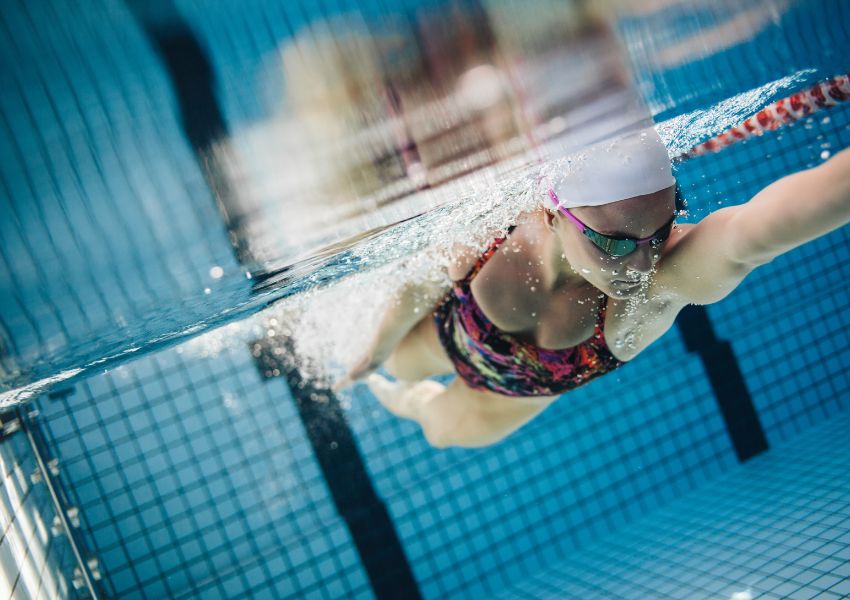
By utilizing the resistance of the water (which 800x denser than air), we extend the arms, legs and trunk in a manner that minimizes stress on the joints.
The benefits of low-impact exercise is obvious: swimming helps us to avoid the injuries associated with high-impact exercise, and as a consequence, we are able to exercise longer and more often.
Full body workout
Unlike running, swimming is a full-body workout. Your arms and shoulders pull you through the water, the trunk stabilizes the body, and your legs flutter kick to help propel you through the water.
There are nearly no muscles that are inactive when swimming. While swimming is a killer full-body cardio exercise, you can also target the upper or lower body.
To really hit your shoulders and back, grab some swim paddles and a pull-buoy and do some pulling sets. You can also copy the lower body specialization of running by grabbing a kickboard (and even some swim fins) and doing kicking sets and workouts.
Because you can hit different parts of the body, you can swim more compared to running because you can do workout splits (alternate days/swim workouts focusing on the upper and lower body, for example).
Lots of training accessories to choose from
Although the kickboard and pull-buoy are the two traditional swimming aids at the pool, there is a TON of other tools and accessories you can use in your pursuit of your health and fitness goals.
They include:
Swim paddles – these increase the surface area of your hand, pulling more water, and increasing activation in the arms, shoulders, back, and chest. Choosing the right swim paddles helps swimmers get stronger and faster.
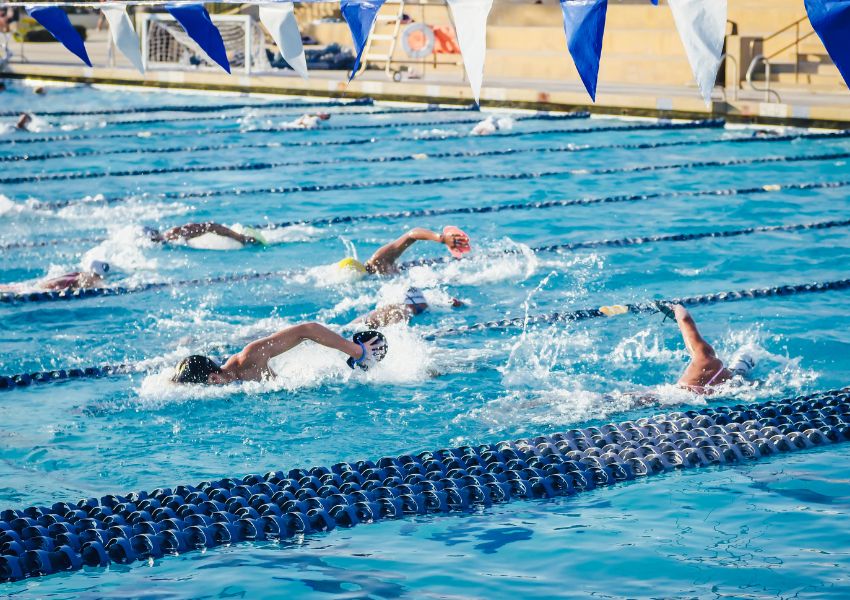
Swim fins – Fins are a fun way to increase the challenge on your legs, and swim training fins allow you to go a little faster in the water, which helps teach your body how to position itself more efficiently
Swim parachute – for even more resistance, try a swim parachute, which is exactly as it sounds, a parachute attached to a belt that “catches” water behind you, cranking up the difficulty
And much, much more.
With all of the swimming aids out there, you will never run out of ways to challenge yourself in the pool.
Swimming is an excellent pulmonary workout
Being able to breathe deeply and properly is crucial for a wide variety of reasons.
And swimming, because it forces you to time your breaths between strokes, when turning, and when pushing off, builds exceptional pulmonary strength, building powerful lungs that can breathe deeper and harder compared to other athletes.
A study titled “Comparative study of lung functions in swimmers and runners” discovered that former swimmers, even after being out of the pool for three years, still had stronger lungs compared to a group of middle-distance runners3.
Shreds calories like crazy
When it comes to calories-per-minute, running holds the edge on swimming.
The ACE study mentioned earlier found that running torched 17 calories per minute while swimming at “a moderate pace” burned 11.6 calories per minute for a 180lb person.
Extrapolating this figure, for 30 minutes of exercise, swimming would burn 348 calories, while running would burn 510 calories.
But this discounts the fact that most of us can swim longer than we can run, particularly newer trainees and people just getting back into shape.
Because swimming is lower-impact, we can do it for longer, which creates an advantage for hitting the pool for weight loss.
So while you may be burning more calories short-term with running, swimming presents the opportunity to burn more calories by being able to extend the length of your cardiovascular workout.
Also, comparing “moderate” freestyle swimming to running doesn’t seem like a fair comparison.
Below is a screenshot of a recent swim workout I did where I swam at a vigorous pace for the better part of an hour. Nearly 1,500 calories burned!
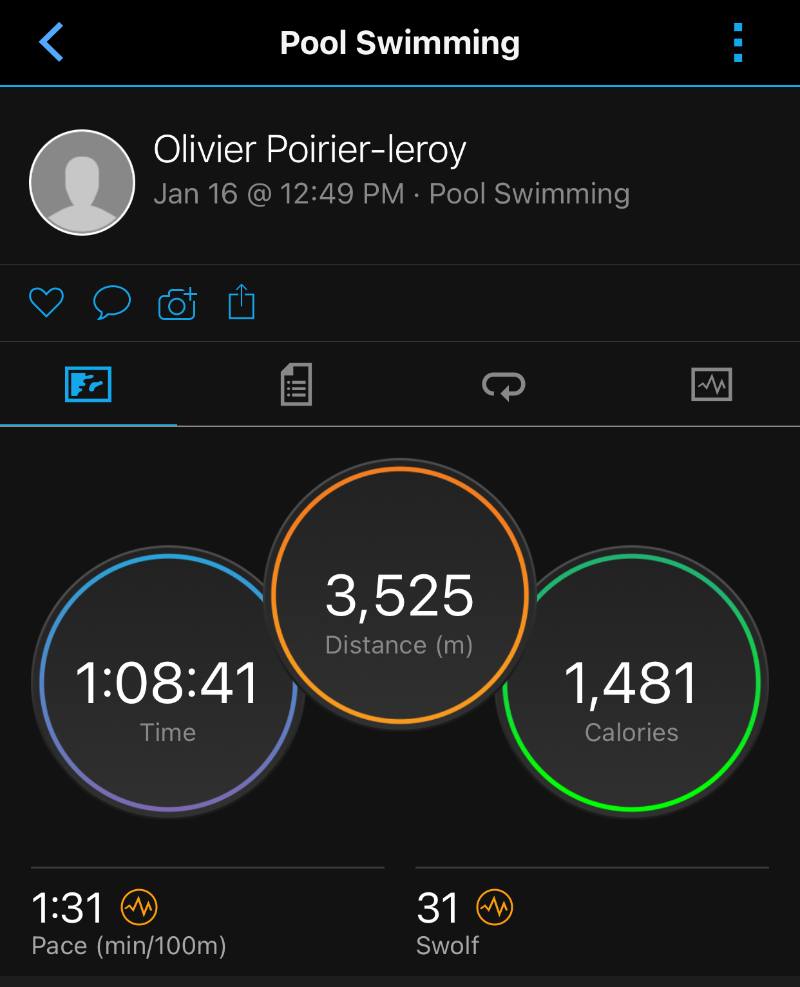
The Cons of Swimming
Takes up a lot of time.
One of the big conveniences of running is that you can walk out the front door and start running.
With swimming, there is driving to the pool, getting changed, doing the swim, and then repeat the process of getting changed and driving home.
The non-swimming time frequently ends up taking more time than my in-the-water time.
Pool dependent.
Swimming requires a pool. Few of us have one in the backyard, and therefore depend on the lap swims at our local pools.
Pools have limited hours and even lap swims have designated time slots, cutting down on the opportunities to sneak in a workout.
My local pool, for example, only has lap swim available between 10:30am and 2:45pm (and then a late-night session from 8:00pm to 10:00pm).
Swimming vs. Running – The Final Verdict
At the end of the day, we gotta give the edge to swimming when it comes to workouts.
(Yes, as a swimming website, we are biased. And we are okay with that ?.)
After all, swimming:
- Is low-impact, helping you avoid the stress and impact injuries that can happen when running
- Burns more calories in your workouts as you can do it for longer compared to running
- Targets every major muscle group in your body, unlike running which is an entirely lower-body form of exercise
At the end of the day, we aren’t trying to sandbag running as a form of exercise.
And there is no one that says you HAVE to choose one or the other.
In fact, as variety is the spice of life (and a solid workout routine), there is no reason you cannot incorporate both into your weekly training regimen.
But if you have to choose just one, it’s time to strap on those swim goggles and hit the pool!
More Stuff Like This
The Beginner’s Guide to Lap Swimming. Want to start swimming? Here’s the beginner lap swimmer’s guide to everything you need to know about getting in shape and having fun at the lap pool.
3 Swimming Workouts for Supercharged Weight Loss. Looking for some swimming workouts to lose weight? Try these 3 swim workouts that are designed to torch fat and help you get fit.

